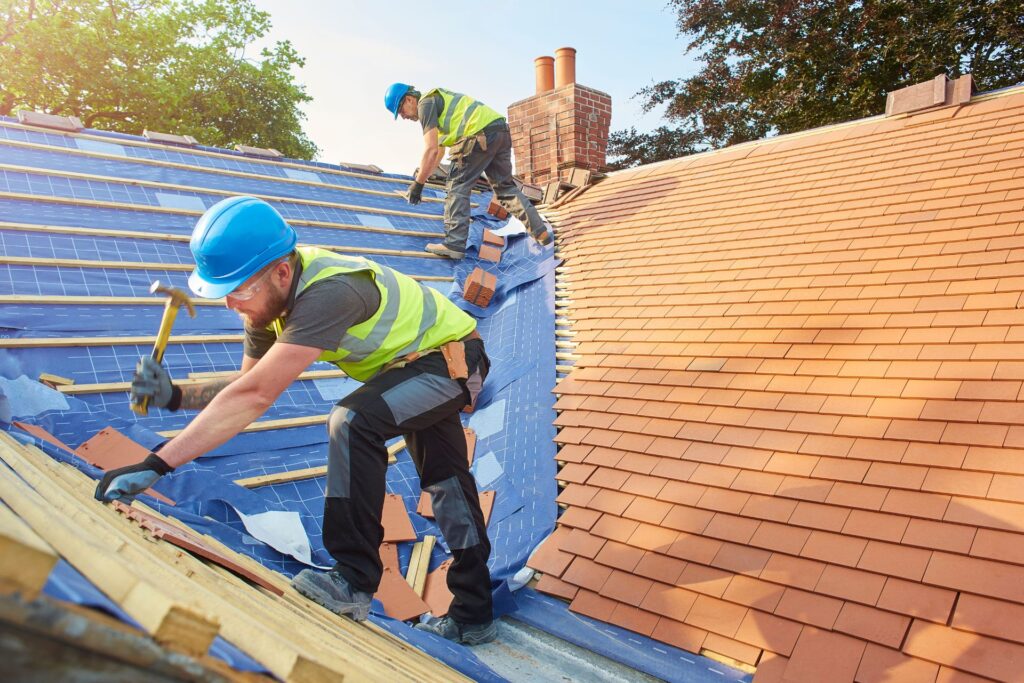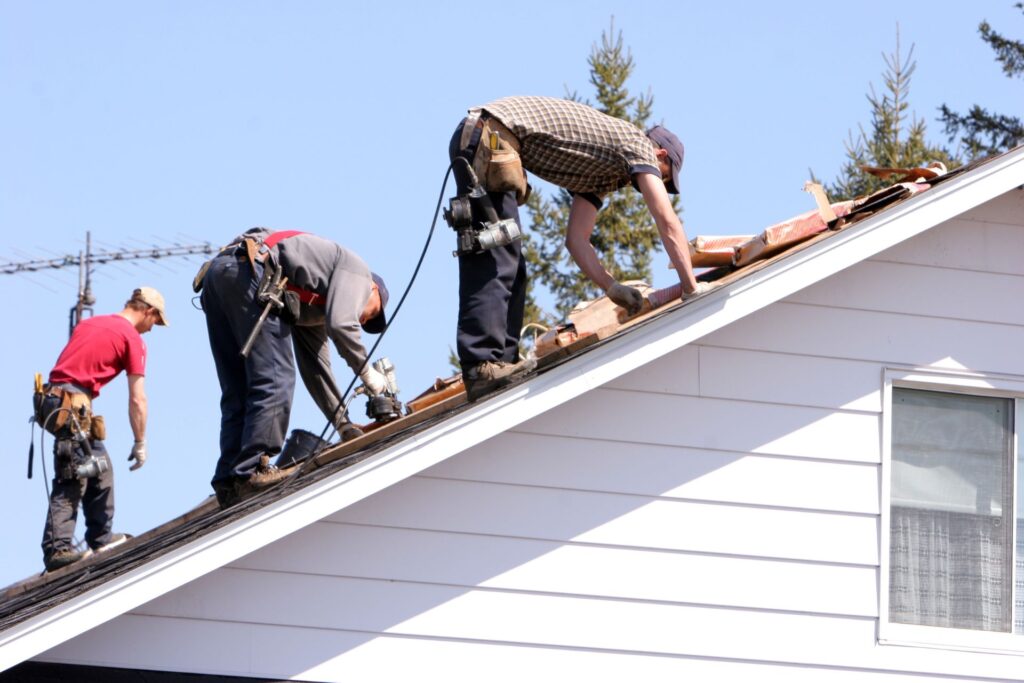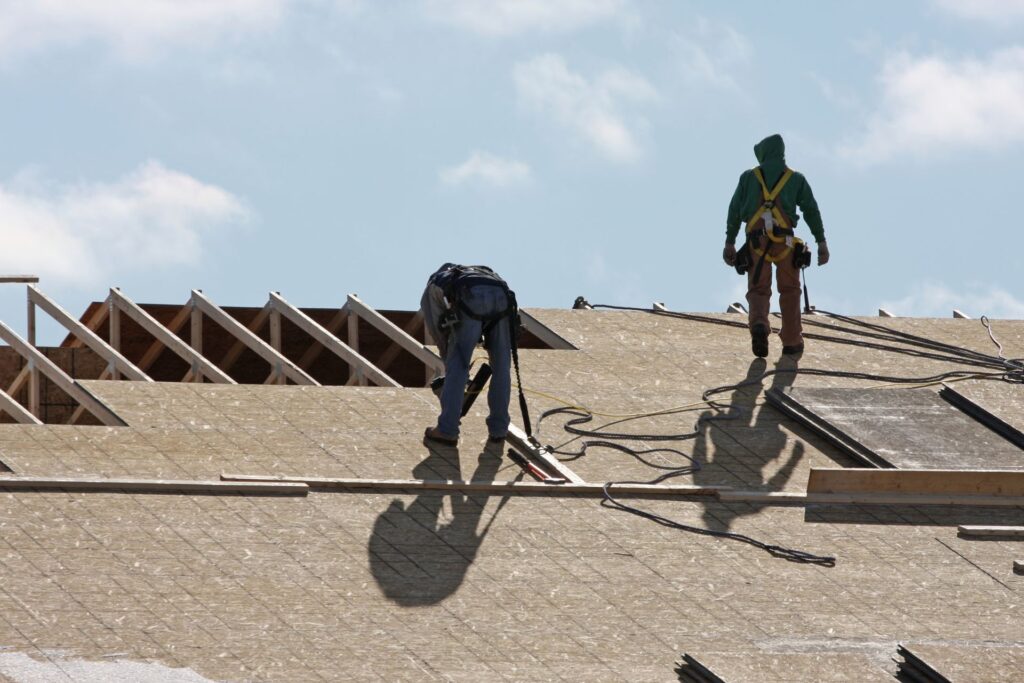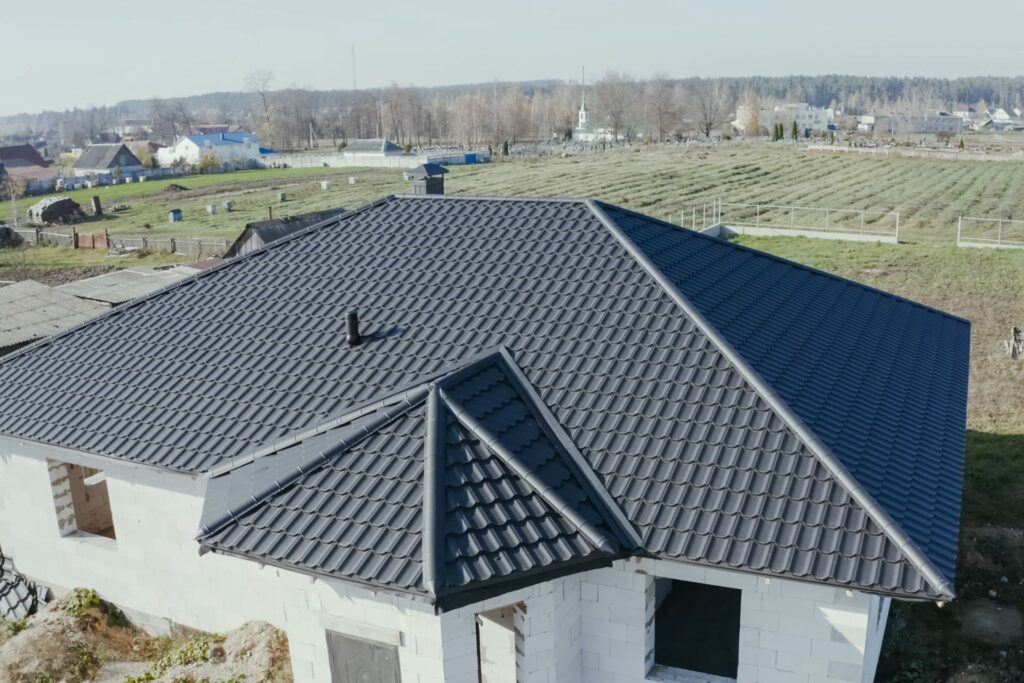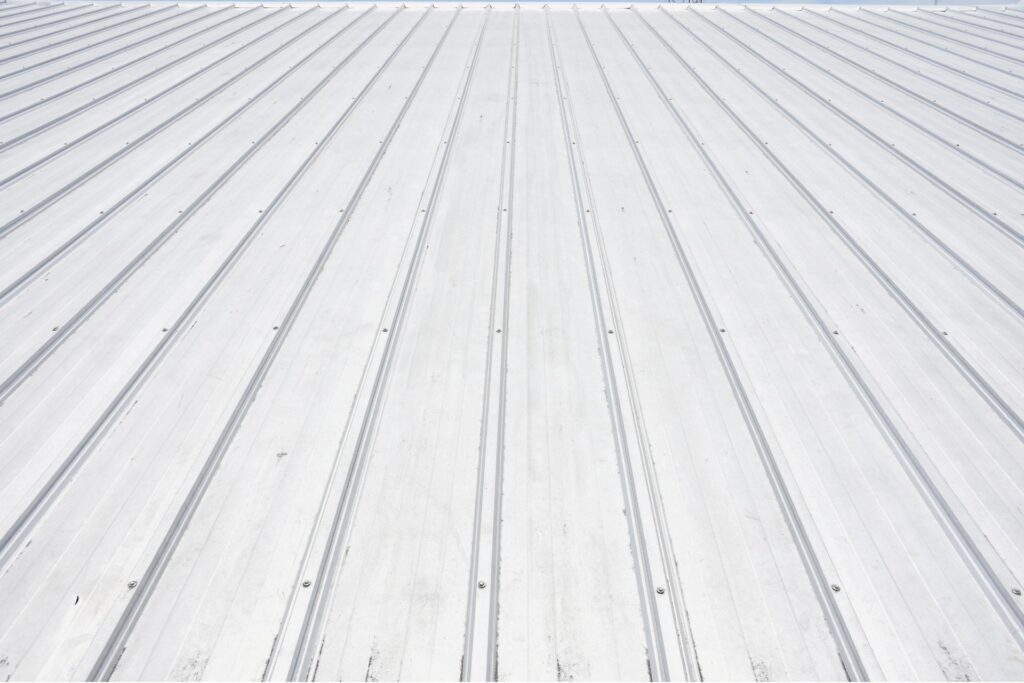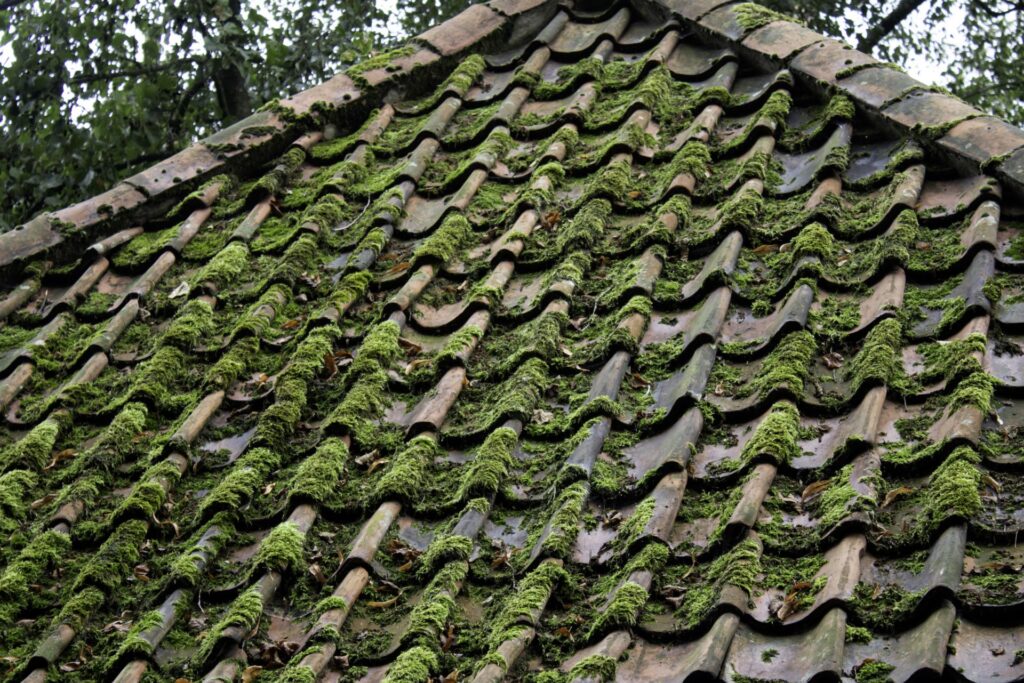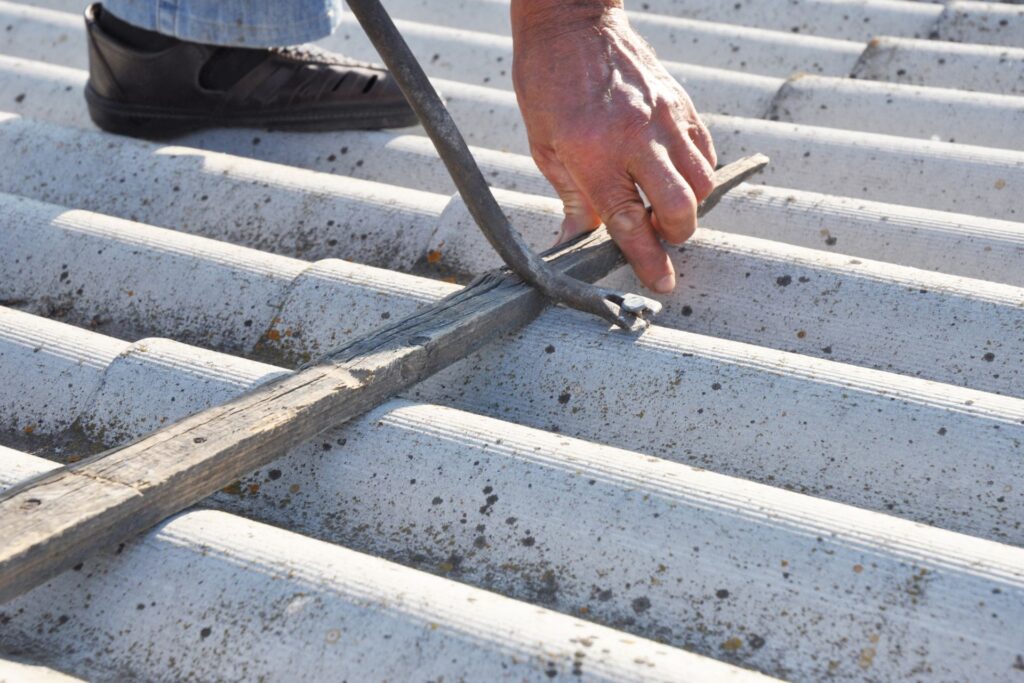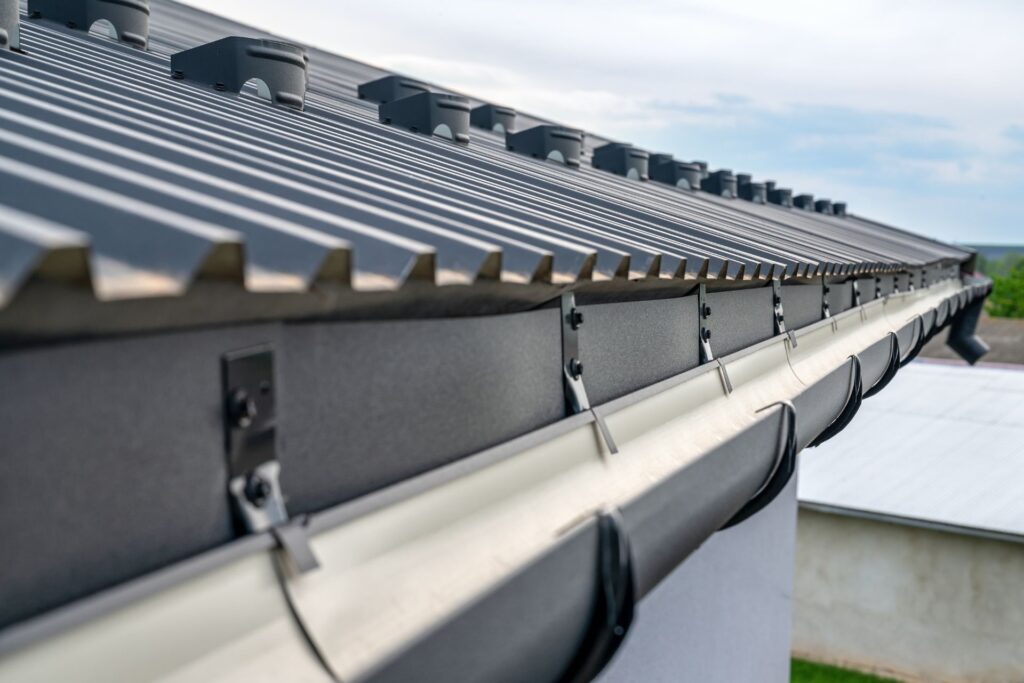Ultimate Guide To Shingle Roofing NZ
Welcome to your comprehensive guide on shingle roofing in New Zealand, where we explore everything you need to know about this popular roofing option. Whether you’re building a new home or considering an upgrade, shingle roofing offers a versatile, durable, and cost-effective solution that suits the diverse climates and architectural styles found across NZ. In this post, we’ll dive into the benefits, types, maintenance tips, and everything in between to help you make an informed decision about whether shingle roofing is the right choice for your home.
Shingle roofing in New Zealand is a durable and cost-effective option that suits the country’s varied climate conditions. Available in materials like asphalt, cedar, and slate, shingle roofs offer aesthetic versatility and ease of installation. They provide strong resistance to wind, rain, and UV exposure, making them an excellent choice for both urban and rural homes in NZ. Regular maintenance, such as cleaning and inspections, can further extend the lifespan of a shingle roof, making it a long-lasting and visually appealing option for homeowners.
- What Is Shingle Roofing?
- Benefits Of Shingle Roofing In New Zealand
- Types Of Shingle Roofing Available In NZ
- Shingle Roofing Vs. Other Roofing Options In NZ
- Cost Of Shingle Roofing In NZ
- Shingle Roofing Maintenance Tips
- Choosing The Right Shingle Roofing Contractor In NZ
- Sustainability And Environmental Impact Of Shingle Roofing In NZ
- FAQs: About The Shingle Roofing NZ
- Conclusion
What Is Shingle Roofing?
Shingle roofing is one of the most common and popular roofing styles used in homes worldwide, and New Zealand is no exception. In simple terms, shingle roofing refers to roofs made from overlapping materials, or “shingles,” that are installed in rows, typically from the bottom up. Each shingle covers the one below it, creating a weather-resistant barrier that protects the home from elements such as rain, wind, and snow.
Shingles come in various materials, each with its unique characteristics. The most widely used types include asphalt, cedar, and slate, but there are also other options like metal or composite shingles.
Types of Shingles
1. Asphalt Shingles: The most common and affordable type of shingle, asphalt is durable, versatile, and available in many colors and styles. It’s widely chosen for its ease of installation and ability to withstand the often unpredictable New Zealand weather.
2. Cedar Shingles: Cedar wood shingles, often known as wood shakes, offer a natural, rustic appearance. They are highly durable and provide excellent insulation. Although they require more maintenance than asphalt shingles, their natural beauty makes them a popular choice for homeowners seeking a distinctive look.
3. Slate Shingles: Known for their elegant and timeless appearance, slate shingles are made from natural stone. They offer superior longevity and resistance to fire and moisture. While they are more expensive and heavier than other types, slate roofing can last for over a century with proper care.
History and Popularity in New Zealand
Shingle roofing has a rich history in New Zealand, dating back to early European settlers who brought the style from their homelands. Asphalt shingles, in particular, gained popularity in the 20th century due to their affordability and ease of installation. Over time, advancements in roofing technology have made shingles even more durable and attractive to Kiwi homeowners.
In New Zealand, shingle roofs have become a popular choice due to their aesthetic appeal, and durability. Homeowners appreciate the variety of options available, allowing them to select a material that suits both their budget and personal style. Whether it’s the rustic charm of cedar or the sleek sophistication of slate, shingle roofing continues to be a favored option in NZ architecture.
Furthermore, shingle roofing aligns well with the diverse climates found across New Zealand. It provides excellent protection against the wet winters and high winds common in some areas while also offering UV resistance for homes in sunnier regions. As a result, shingle roofing remains a versatile and enduring choice in New Zealand homes.

Benefits Of Shingle Roofing In New Zealand
Choosing the right roofing material for your home in New Zealand is an important decision. Shingle roofing stands out as a popular option and for good reasons. Whether you’re considering durability, affordability, aesthetic appeal, or ease of installation, shingles offer significant benefits for homeowners in New Zealand.
Durability: Shingle Roofing Withstands New Zealand’s Weather Conditions
New Zealand’s climate is known for its variety, ranging from hot summers to cold winters, with regions experiencing everything from heavy rains to strong winds. Shingle roofs are engineered to perform well under these conditions. They provide excellent resistance to the elements, such as high winds, rain, and prolonged UV exposure. In areas that experience severe weather events, such as the coastal regions, shingles are particularly beneficial because they are designed to endure wind uplift. Moreover, shingles resist moisture effectively, preventing leaks and water damage, which is essential for homes exposed to New Zealand’s frequent rains.
Shingles also have a longer lifespan compared to other roofing materials, thanks to advancements in their composition. High-quality shingles are now manufactured with materials that can withstand extreme temperatures and reduce the risks of wear and tear caused by prolonged exposure to the sun. This level of durability ensures homeowners enjoy long-lasting protection for their homes, no matter the region of New Zealand they live in.
Affordability: A Cost-Effective Roofing Solution
When it comes to roofing, balancing quality and cost is crucial for most homeowners. Shingle roofing offers an affordable solution without sacrificing quality. The materials used in shingle roofs are readily available and cost-effective, making them a budget-friendly choice for new constructions and renovations alike. Compared to other roofing materials such as tiles or metal, shingles tend to be more affordable to purchase and install, which can make a significant difference for homeowners who want to manage their budget effectively.
Not only is the upfront cost of shingle roofing competitive, but shingles also offer a good return on investment in the long run. With their durability and resistance to New Zealand’s diverse weather conditions, homeowners won’t need to worry about frequent repairs or replacements, resulting in additional savings over time. For those looking for a roofing option that delivers in both price and performance, shingles are an excellent choice.
Aesthetic Appeal: Versatility for New Zealand Homes
One of the standout features of shingle roofing is its versatility in terms of aesthetic appeal. Shingles come in a wide range of colors, textures, and styles, making it easy to find an option that complements the unique architectural style of your home. Whether your house has a traditional, modern, or rustic design, shingle roofing can enhance its curb appeal by providing a visually pleasing, cohesive look.
In New Zealand, homes are built with a variety of architectural influences, and shingles can be tailored to match any style. For example, darker shingle tones can provide a sleek, modern look, while lighter shades can complement more traditional or coastal homes. The variety of shingle options available allows homeowners to customize their roof’s appearance while maintaining durability and functionality.
Ease of Installation and Maintenance
Another key benefit of shingle roofing is its ease of installation and maintenance. Compared to other materials, such as metal or tile roofing, shingles are typically easier and quicker to install, reducing labor costs and time on-site. This is especially advantageous for homeowners looking to complete a roofing project without extended disruptions. Many roofing contractors in New Zealand are familiar with shingle installation, which can further streamline the process.
In terms of maintenance, shingle roofs are relatively low maintenance. Regular inspections and minor repairs, such as replacing individual damaged shingles, can keep the roof in optimal condition for many years. Shingles are also easier to repair compared to other roofing types if a section is damaged due to wind or debris, it’s usually a straightforward process to replace the affected shingles without needing to replace the entire roof. This makes shingle roofing a convenient and cost-effective solution for homeowners who want to avoid frequent, costly repairs.
Shingle roofing offers an excellent balance of durability, affordability, aesthetic appeal, and ease of installation and maintenance, making it an ideal option for homes in New Zealand. Whether you’re dealing with the country’s ever-changing weather conditions or seeking a roofing solution that won’t break the bank, shingles provide a versatile and practical choice for Kiwi homeowners.

Types Of Shingle Roofing Available In NZ
When it comes to choosing the right shingle roofing for your home in New Zealand, there are a variety of options available. Each type has its unique benefits, and selecting the right one can enhance not only the appearance of your home but also its longevity, energy efficiency, and protection against the elements. Let’s dive into the different types of shingle roofing commonly available in NZ to help you make an informed decision.
Asphalt Shingles
Asphalt shingles are by far the most popular roofing material, not just in New Zealand, but globally. These shingles are widely preferred because of their affordability, easy installation, and availability. If you’re looking for a cost-effective solution that doesn’t compromise on quality, asphalt shingles are a great option to consider.
Advantages
- Affordability: Asphalt shingles are one of the most budget-friendly roofing options, making them ideal for homeowners looking to get the best value for their money.
- Availability: Due to their widespread use, asphalt shingles are readily available across New Zealand, meaning you can easily find them at most roofing suppliers.
- Ease of Installation: These shingles are relatively easy to install, which can reduce labor costs and shorten the duration of your roofing project.
Common Brands in NZ
Some of the leading brands of asphalt shingles available in New Zealand include GAF, IKO, and CertainTeed. These brands are known for producing high-quality shingles that are built to withstand the varying weather conditions of New Zealand.
Cedar (Wood) Shingles
Cedar shingles offer a unique and natural aesthetic that sets your home apart from others. These shingles are crafted from cedar wood, giving your home a warm, rustic look that blends seamlessly into New Zealand’s natural landscapes.
The appeal of Natural Wood Shingles
Cedar shingles are renowned for their timeless beauty and organic feel, making them a popular choice for homeowners looking to add a touch of nature to their homes.
Durability in NZ’s Climate
Cedar wood is naturally resistant to moisture and decay, which makes it well-suited for New Zealand’s coastal regions and areas that experience high humidity. With proper maintenance, cedar shingles can last for decades, providing excellent durability.
Environmental Benefits
Cedar shingles are eco-friendly as they are made from renewable resources and have a low carbon footprint. When sourced from responsibly managed forests, cedar shingles are a sustainable roofing option.
Slate Shingles
For those who are looking to invest in premium roofing, slate shingles are the ultimate choice. Slate is a natural stone that is known for its elegance, longevity, and high-end appearance. Slate shingles are often found in luxury homes and historic buildings due to their timeless appeal and durability.
Long Lifespan and Aesthetic Value
Slate shingles can last for over a century, making them one of the longest-lasting roofing materials available. They offer a distinctive, classic look that enhances the visual appeal of any home.
Challenges
- Cost: Slate shingles are significantly more expensive compared to other options like asphalt or cedar. However, their longevity can make them a worthwhile investment in the long run.
- Installation Expertise: Installing slate shingles requires a high level of expertise, as the material is heavy and needs to be handled carefully. It’s important to hire experienced roofing professionals who are familiar with the intricacies of slate installation to ensure the best results.
Metal Shingles
Metal shingles are gaining popularity in New Zealand due to their durability, fire resistance, and eco-friendliness. Unlike traditional roofing materials, metal shingles offer a modern, sleek appearance while still providing excellent protection against the elements.
Benefits of Metal Shingles
- Fire Resistance: Metal shingles are non-combustible, making them an excellent choice for areas prone to wildfires or homes looking for added fire safety.
- Longevity: Metal shingles can last up to 50 years or more with minimal maintenance, making them a long-lasting roofing solution.
- Eco-Friendliness: Many metal shingles are made from recycled materials and can be recycled again at the end of their lifespan, making them a sustainable option for environmentally conscious homeowners.
In conclusion, choosing the right type of shingle roofing in New Zealand depends on various factors such as your budget, aesthetic preferences, and the specific climate of your region. Asphalt shingles are perfect for homeowners looking for a cost-effective and practical solution, while cedar and slate offer natural beauty and long-term durability. If you’re looking for a modern, eco-friendly roofing option, metal shingles are an excellent choice. Be sure to consult with a professional roofing contractor to determine which material is best suited for your home’s needs.

Shingle Roofing Vs. Other Roofing Options In NZ
When it comes to choosing the right roofing material for your New Zealand home, there are several options available, each with its own set of advantages. Among the most popular choices are shingle roofing, tile roofing, corrugated metal roofing, and membrane roofing. Let’s break down how these options compare in terms of durability, cost, style, and maintenance, to help you make an informed decision for your home.
Tile Roofing vs. Shingle Roofing
- Durability: One of the primary differences between tile and shingle roofing is the durability factor. Tile roofs, typically made from materials like concrete or clay, are known for their longevity and ability to withstand harsh weather conditions. They are especially suitable for homes in areas prone to extreme weather, such as high winds or heat. Shingle roofs, while durable, have a shorter lifespan compared to tiles, usually lasting 20-30 years, depending on the material used. However, shingle roofs are still highly reliable, especially with modern asphalt shingles that offer enhanced protection against weather elements.
- Cost: In terms of cost, tile roofs tend to be on the pricier side due to the heavier material and more labor-intensive installation process. Shingle roofs, particularly asphalt shingles, are more cost-effective upfront, making them a popular choice for homeowners looking for a budget-friendly option. While tile roofing requires a significant initial investment, it may provide better long-term value because of its durability, whereas shingles may require replacement or repair sooner.
- Aesthetics: Tile roofing offers a classic and elegant aesthetic, which can significantly enhance the curb appeal of certain architectural styles, particularly Mediterranean and traditional homes. Shingle roofs, on the other hand, provide a more versatile aesthetic, available in a variety of colors and textures, making them suitable for both modern and classic home designs. Ultimately, the choice between tile and shingle may come down to your home’s style and personal preference.
Corrugated Metal Roofing vs. Shingle Roofing
- Style: Corrugated metal roofing has become a popular choice in New Zealand for its sleek, modern look and industrial appeal. Many homeowners appreciate the clean lines and minimalist design that metal roofing provides, especially in contemporary homes or rural settings. Shingle roofing, however, offers a more traditional look, which may better suit older homes or those looking for a warmer, more classic aesthetic. The choice between these two often boils down to the architectural style and personal taste of the homeowner.
- Maintenance: When it comes to maintenance, corrugated metal roofing tends to outperform shingles. Metal roofs are resistant to many of the issues that can plague other roofing materials, such as mold, mildew, and insect damage. They also hold up well in extreme weather conditions, making them an excellent choice for areas with heavy rain or high winds. Shingle roofs, particularly asphalt shingles, may require more frequent maintenance, including replacing missing or damaged shingles after storms. However, shingles are generally easier and less costly to repair than metal roofing.
- Longevity: Metal roofs tend to last longer than shingle roofs, often exceeding 50 years with proper care, compared to the 20-30-year lifespan of shingle roofing. However, the upfront cost of corrugated metal roofing is typically higher than shingles, so it’s essential to weigh the long-term benefits against the initial expense.
Membrane Roofing vs. Shingle Roofing
- Waterproofing: Membrane roofing, often used for flat or low-slope roofs, offers superior waterproofing compared to other roofing materials. This makes it particularly advantageous for homes in coastal areas or regions that experience heavy rainfall, which is common in parts of New Zealand. Shingle roofs, while designed to shed water effectively, may not provide the same level of protection against water intrusion, especially on flat surfaces or in areas prone to pooling water. In coastal or high-rainfall areas, membrane roofing can be a more reliable choice for preventing leaks and water damage.
- Cost and Installation: Membrane roofing generally requires professional installation, and the cost can vary depending on the specific type of membrane used. In contrast, shingle roofing is typically easier and less expensive to install, especially for sloped roofs. However, membrane roofs can offer long-term savings in terms of reduced repair costs, as they are highly resistant to weather-related damage.
- Durability in Extreme Conditions: Both membrane and shingle roofing materials offer durability, but they excel in different conditions. Membrane roofs are designed to withstand prolonged exposure to moisture, making them ideal for areas with heavy rainfall. Shingle roofs, especially asphalt shingles, are better suited to regions where wind and sun exposure are more significant concerns. For homes in areas that experience both heavy rain and strong winds, it’s essential to choose the right material for your specific environmental conditions.
In conclusion, when choosing between shingle, tile, corrugated metal, and membrane roofing for your New Zealand home, it’s important to consider your specific needs in terms of durability, cost, maintenance, and aesthetic preferences. Each material offers unique advantages, and the right choice will ultimately depend on your home’s location, architectural style, and climate conditions.

Cost Of Shingle Roofing In NZ
Shingle roofing has become an increasingly popular choice for homeowners across New Zealand due to its durability, aesthetic appeal, and relative affordability. However, when considering shingle roofing, understanding the associated costs is crucial for making an informed decision. Here’s a detailed breakdown of the various factors that influence the overall cost of shingle roofing in NZ.
Material Costs
The price of shingle roofing in New Zealand can vary significantly depending on the type of material you choose. Each material has unique properties, benefits, and price points that can impact your decision. Here’s a general range of costs for the most common shingle roofing materials available in New Zealand:
- Asphalt Shingles: One of the most affordable options, asphalt shingles typically cost between NZD 50 and $90 per square meter. These are widely used due to their reasonable durability and low upfront costs.
- Wood Shingles: Known for their natural, rustic look, wood shingles are more expensive, usually ranging from NZD 150 to $200 per square meter. Cedar is a popular wood option that offers strong weather resistance but comes at a higher price.
- Metal Shingles: For homeowners seeking long-term durability and excellent weather resistance, metal shingles are a great option. These tend to cost between $100 and $160 per square meter.
- Slate Shingles: If you’re aiming for a high-end, luxurious look, slate shingles are an option, albeit a more costly one, ranging from NZD 300 to $450 per square meter. These shingles are known for their longevity and timeless appearance but come with a significantly higher upfront investment.
Installation Costs
In addition to material costs, you’ll need to factor in the installation fees. These can vary depending on the type of shingles you select, the complexity of your roof’s design, and the experience level of the roofing contractor.
- Type of Shingles: Different types of shingles require different installation techniques. For instance, asphalt shingles are generally the easiest and quickest to install, which keeps labor costs relatively low. On the other hand, installing slate shingles can be more labor-intensive due to the weight and precision required, driving up the cost of labor.
- Roof Complexity: The shape, slope, and size of your roof play a significant role in the installation price. Simple, flat roofs are easier and less costly to install compared to roofs with multiple angles, steep slopes, or intricate designs, where more time and skill are required.
- Labor Costs: Labor fees vary between roofing contractors. On average, you can expect to pay between NZD 50 and $100 per hour for skilled roofing professionals in New Zealand. Ensure that you get quotes from multiple contractors to compare prices and find a reliable roofer within your budget.
Long-term Value
When considering the cost of shingle roofing, it’s essential to look beyond the initial investment and think about the long-term value. While some materials may be more expensive upfront, they can offer benefits in terms of energy efficiency, lifespan, and reduced maintenance costs.
- Energy Efficiency: Some shingle materials, such as metal or asphalt, can help improve your home’s energy efficiency. Certain shingles come with reflective coatings that reduce heat absorption, lowering your energy bills over time by keeping your home cooler in the summer.
- Durability and Lifespan: Shingle roofing can last anywhere from 20 to 100 years, depending on the material. Asphalt shingles have a shorter lifespan (20-30 years), while slate or metal shingles can last up to 100 years with proper care. Investing in a more durable material can save you money in the long run by reducing the need for repairs or replacement.
- Maintenance Costs: Regular maintenance is necessary to extend the life of your roof. While asphalt shingles may require periodic inspections and minor repairs, metal or slate shingles generally have lower maintenance needs, which can further contribute to long-term cost savings.
In conclusion, while the upfront costs of shingle roofing in New Zealand can vary based on the type of material and installation complexity, the long-term value is where the real benefits shine. Investing in a high-quality roof not only enhances your home’s aesthetic appeal but also ensures energy efficiency, longevity, and reduced maintenance expenses. Always consider both the immediate and future costs to make an informed and budget-friendly decision for your home.

Shingle Roofing Maintenance Tips
Maintaining a shingle roof is essential to ensure its longevity and prevent costly repairs down the line. By following these simple yet effective maintenance tips, homeowners can keep their shingle roofs in top condition for years to come.
Regular Inspections
One of the most important steps in shingle roof maintenance is conducting regular inspections. It’s recommended to schedule inspections at least twice a year ideally in the spring and fall and immediately after significant weather events such as storms or heavy rainfall. During these inspections, homeowners should look for signs of wear and tear, such as cracked, curling, or missing shingles. Paying close attention to areas around chimneys, vents, and skylights is essential, as these are common points for potential leaks. Regular inspections allow for early detection of problems, preventing them from becoming major issues.
Cleaning
Over time, shingle roofs can accumulate debris, moss, and lichen, particularly in damp climates like New Zealand. Left unchecked, this growth can lead to moisture retention, which can damage shingles and promote the growth of mold and mildew. To keep your roof clean, it’s important to use a gentle approach. Start by removing leaves and twigs using a soft-bristled broom or leaf blower avoid using high-pressure washers, as they can strip the protective granules from the shingles. For moss and lichen, a solution of water and mild detergent or specialized roof-cleaning products can be used. Apply the solution, allow it to sit, and then gently scrub with a soft brush. Regular cleaning not only enhances the appearance of your roof but also extends its lifespan.
Repairing Damaged Shingles
Damaged or missing shingles can expose the roof to water damage and leaks. Fortunately, minor repairs can often be handled with a few simple tools and some basic DIY know-how. For curled shingles, use roofing cement to flatten them back in place. If a shingle is cracked, apply a layer of roofing sealant beneath the crack and press it down, securing it with more sealant on top. For completely missing or severely damaged shingles, you’ll need to replace them. Start by gently lifting the shingles surrounding the damaged one, removing the nails, and slipping a new shingle into place. Be sure to secure it with roofing nails and seal the edges with roofing cement. Always check the weather forecast before attempting repairs—working on a dry, clear day will ensure the best results.
When to Call a Professional
While many small shingle repairs can be done yourself, there are certain situations where calling a professional roofer is the best course of action. If the damage covers a large area or if you’re uncomfortable working at heights, it’s safer to hire a professional. Additionally, if you notice signs of significant water damage, sagging, or structural issues, these could be indicators of more serious problems that require expert attention. Professionals have the tools, experience, and safety equipment necessary to assess and repair your roof properly. If your roof is older or has sustained severe storm damage, it might be time to consider a full replacement, and a professional can help guide you through that process.
By following these tips, you can maintain the health and integrity of your shingle roof, preventing small problems from turning into costly repairs. Regular maintenance, timely cleaning, and knowing when to call in a pro will help keep your roof in top shape, ensuring your home stays safe and protected from the elements.

Choosing The Right Shingle Roofing Contractor In NZ
When it comes to shingle roofing in New Zealand, picking the right contractor is one of the most crucial steps in ensuring a quality job. The last thing any homeowner wants is a poorly installed roof that may cause further damage or require expensive repairs in the future. Here’s a detailed guide to help you choose the best shingle roofing contractor for your project:
Do Thorough Research and Check Reviews
Before hiring any contractor, it’s important to invest time in research. Begin by looking for roofing companies that specialize in shingle roofing in New Zealand. Check their online presence many contractors will have websites or social media pages displaying their services. But don’t stop there. Dive into customer reviews and testimonials. Websites like Google Reviews, Facebook, or local NZ trade forums are invaluable for seeing what previous clients have to say. Were past clients satisfied with their work? Did the company stick to its timeline and budget? Look for contractors with a track record of reliability and professionalism.
Also, ensure that the contractors are licensed and insured. In New Zealand, roofing contractors should be compliant with the standards set by the Roofing Association of New Zealand (RANZ). This will guarantee that the contractor follows industry best practices and that you are covered in case of any unexpected issues.
Ask for References and Portfolios
A reputable contractor will have no problem providing you with a portfolio of their previous work. Ask to see examples of similar projects they’ve completed, particularly shingle roofs, as this gives you an idea of their expertise with the material and installation process. A well-established contractor may even have a website gallery showcasing before and after photos.
Alongside portfolios, request references from past clients. Reach out to these references to get a clearer picture of their experiences with the contractor. Ask questions like: Did they complete the project on time? Was the communication smooth throughout the process? Were there any unexpected costs or complications? These insights can help you make a well-informed decision.
Compare Quotes
Don’t settle for the first roofing contractor you come across. It’s a smart move to get quotes from at least three different contractors. While it’s tempting to go with the cheapest option, be cautious. A significantly lower quote might indicate subpar materials or inexperienced labor. Instead, aim to strike a balance between quality and affordability. Review each quote carefully and ask contractors to explain any price differences.
When comparing quotes, take note of the specific materials they plan to use. Premium shingle materials often come at a higher price, but they offer better longevity and performance. Discuss the lifespan of the shingles they propose and ensure they are suitable for New Zealand’s varying weather conditions.
Check for Warranties and Guarantees
A reliable contractor should offer warranties on both the materials and workmanship. Material warranties are often provided by the manufacturer, covering defects in the shingles for a certain period. However, workmanship warranties are equally essential. These cover issues related to the installation process. Without a workmanship warranty, you could be left paying for costly repairs if the roof wasn’t installed correctly.
Ensure you understand the terms and conditions of these warranties before signing a contract. Clarify what they cover, how long they last, and what might void them. A contractor who stands behind their work will happily provide these guarantees, giving you peace of mind that your investment is protected.
Choosing the right shingle roofing contractor in New Zealand requires careful research, thoughtful comparisons, and ensuring the contractor offers both quality workmanship and fair pricing. By checking reviews, asking for references, comparing quotes, and ensuring warranties, you can feel confident in your decision and enjoy a durable, beautifully installed roof.

Sustainability And Environmental Impact Of Shingle Roofing In NZ
Eco-Friendly Shingles
In New Zealand, there’s a growing demand for eco-friendly roofing solutions as homeowners become more conscious of their environmental footprint. When it comes to shingle roofing, several sustainable options are available that provide a durable and aesthetically pleasing finish while minimizing environmental harm.
One popular choice is shingles made from recycled materials, such as reclaimed asphalt. These recycled shingles are not only cost-effective but also help reduce the demand for new raw materials, limiting the environmental impact associated with manufacturing. Another environmentally responsible option is cedar shingles, especially when sourced from sustainably managed forests. Cedar shingles offer a natural, rustic look, and their production can have a lower carbon footprint when compared to more resource-intensive materials. Additionally, cedar is biodegradable, meaning less waste ends up in landfills at the end of its life cycle.
By selecting eco-friendly shingle options, New Zealand homeowners can enjoy the benefits of a long-lasting roof without compromising their commitment to sustainability.
Energy Efficiency
Shingle roofing can also contribute to energy efficiency, which is increasingly important in a world facing rising energy costs and the effects of climate change. Certain types of shingles, like those designed with cool roofing technology, are engineered to reflect more sunlight and absorb less heat. This heat-reflective property can significantly reduce the amount of heat entering a home, keeping interior temperatures cooler and lowering the demand for air conditioning during warmer months.
In New Zealand’s diverse climate, from the hot, sunny regions of the North Island to the cooler southern areas, energy-efficient shingles can play a key role in reducing both energy consumption and overall utility costs. The benefits of these energy-efficient shingles extend beyond cost savings they also help reduce the strain on local energy grids and contribute to a lower carbon footprint by minimizing reliance on artificial cooling systems.
End-of-Life Recycling
Another important factor in the sustainability of shingle roofing is the consideration of what happens at the end of the shingles’ life cycle. Many traditional roofing materials contribute to the growing problem of construction waste, but shingles, particularly those made from asphalt or metal, can be recycled after they’ve reached the end of their functional life. In New Zealand, initiatives for recycling old roofing materials are gradually becoming more common, giving homeowners the option to dispose of their old shingles responsibly.
Recycling shingles reduces the volume of waste sent to landfills and helps repurpose the materials into new products, such as asphalt for roads or new roofing materials. However, homeowners should also be mindful of the environmental considerations when replacing a shingle roof. Working with roofing contractors who prioritize sustainable practices such as properly disposing of old materials or sourcing new shingles from eco-conscious manufacturers can further enhance the environmental benefits of shingle roofing.
By carefully considering the type of shingles used, their energy-saving potential, and their recyclability at the end of their life cycle, homeowners in New Zealand can significantly reduce the environmental impact of their roofing choices. Sustainable roofing solutions not only protect homes from the elements but also contribute to a healthier planet for future generations.

FAQs: About The Shingle Roofing NZ
Shingle roofing refers to a roofing system made of individual overlapping elements, often made from materials like asphalt, wood (cedar), slate, or metal. It’s popular in New Zealand because it offers excellent durability, and a wide range of aesthetic choices, and performs well in various weather conditions. Shingle roofing also tends to be more affordable compared to other roofing options, making it a practical choice for many homeowners.
The most common types of shingle roofing available in New Zealand are asphalt, cedar (wood), slate, and metal shingles. Asphalt shingles are the most affordable and widely used, while cedar shingles offer a natural look. Slate shingles are a premium option, known for their durability and timeless appearance, and metal shingles are gaining popularity due to their longevity and fire resistance.
The cost of shingle roofing in New Zealand varies depending on the material and the complexity of the roof design. Asphalt shingles tend to be the most affordable, while slate and metal shingles are more expensive. Installation costs also vary but can range from $50 to $150 per square meter, including labor and materials.
The lifespan of a shingle roof depends on the type of material used. Asphalt shingles generally last between 20 to 30 years, while cedar shingles can last 30 to 40 years with proper maintenance. Slate shingles are the most durable, with a lifespan of up to 100 years, while metal shingles can last between 50 and 75 years.
Yes, shingle roofing can be suitable for coastal areas in New Zealand, especially if you choose materials that are resistant to saltwater corrosion and high winds, such as asphalt or metal shingles. Cedar shingles also perform well in coastal environments, provided they are properly treated and maintained to resist moisture and salt exposure.
Shingle roofs require regular maintenance to extend their lifespan. Homeowners should schedule seasonal inspections, clean the roof to prevent moss and lichen buildup and repair any damaged or missing shingles promptly. Proper maintenance is especially important in areas with high rainfall or coastal environments, where moisture can cause faster wear and tear.
While installing a shingle roof may seem straightforward, it is generally recommended to hire a professional roofing contractor for the job. Proper installation is critical for ensuring the roof’s longevity and performance. Mistakes made during installation can lead to leaks, poor insulation, or even structural damage, so it’s best to rely on a qualified professional.
Compared to tile or metal roofing, shingle roofing is typically more affordable and easier to install. Tile roofs are heavier and more expensive but offer superior longevity, while metal roofs are highly durable and eco-friendly. Shingle roofs provide a balance between cost, aesthetics, and durability, making them a popular middle-ground choice for homeowners.
When choosing a shingle roofing contractor in New Zealand, make sure they have proper licensing and insurance, check online reviews, and ask for references from past clients. It’s also a good idea to request a portfolio of their previous work to ensure they have experience with shingle roofing. Always compare quotes from several contractors to ensure you get fair pricing without compromising on quality.
Yes, there are eco-friendly shingle roofing options available in New Zealand. Recycled asphalt shingles and sustainably sourced cedar shingles are environmentally friendly choices. Additionally, metal shingles are 100% recyclable and can contribute to energy efficiency by reflecting heat, and reducing cooling costs. Eco-conscious homeowners can explore these options to minimize their environmental impact while still getting the benefits of shingle roofing.
Conclusion
Shingle roofing is an excellent choice for homeowners in New Zealand, offering a range of benefits such as durability, versatility, and affordability. With various types available, from asphalt to wood and metal, shingle roofs not only provide strong protection against New Zealand’s diverse climate but also enhance the aesthetic appeal of any home. Whether you’re constructing a new house or upgrading an existing roof, shingle roofing delivers a stylish, long-lasting solution that complements both modern and traditional architectural designs. For those interested, reaching out to a local roofing professional or requesting a free quote is a great first step in exploring the best shingle roofing options for your home.
About the Author:
Mike Veail is a recognized digital marketing expert with over 6 years of experience in helping tradespeople and small businesses thrive online. A former quantity surveyor, Mike combines deep industry knowledge with hands-on expertise in SEO and Google Ads. His marketing strategies are tailored to the specific needs of the trades sector, helping businesses increase visibility and generate more leads through proven, ethical methods.
Mike has successfully partnered with numerous companies, establishing a track record of delivering measurable results. His work has been featured across various platforms that showcase his expertise in lead generation and online marketing for the trades sector.
Learn more about Mike's experience and services at https://theleadguy.online or follow him on social media:



